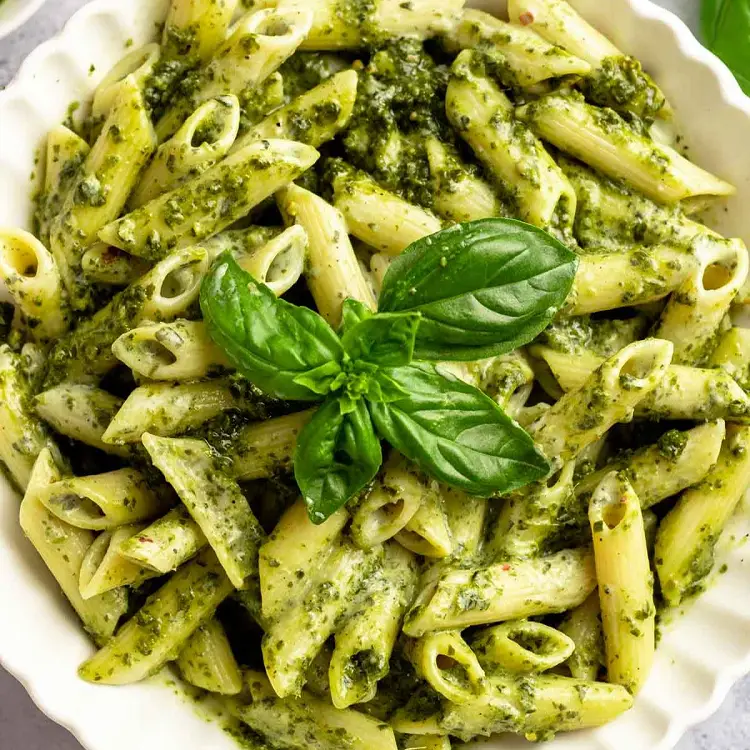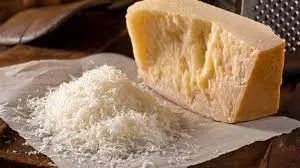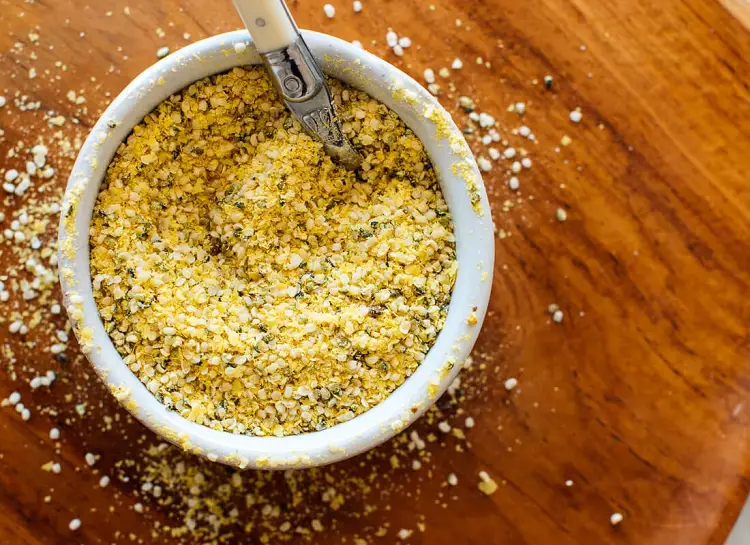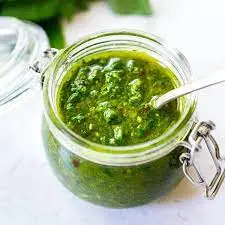Pesto is not always vegan because traditional pesto recipes typically contain parmesan cheese, which is made from animal milk.
However, there are many vegan-friendly alternatives available that use plant-based ingredients instead.
To know more about what makes Pesto non-vegan-friendly and alternative ways to achieve that taste, keep reading this article.

Key Take Aways
Why Is Pesto Not Vegan-Friendly?
Pesto is a popular Italian sauce made from basil, pine nuts, garlic, olive oil, and Parmesan cheese. It is also a delicious and versatile condiment that adds flavor to a wide range of dishes. In addition to Parmesan, pesto recipes occasionally call for different kinds of cheese, such as Pecorino or Romano.
However, despite its widespread popularity, pesto is not considered vegan-friendly. One of its ingredient, Parmesan cheese, for example, is made from animal milk and often contains animal rennet.
As a result, their inclusion in pesto recipes makes the sauce even less compliant with vegan ideals. However, beyond the inclusion of parmesan cheese, there are other reasons why pesto is not vegetarian.

Animal Rennet:
An enzyme called rennet is frequently used in the cheese-making process to coagulate milk, helping the production of curds.
Traditionally, Parmesan cheese, Pecorino, and Romano are made with animal rennet obtained from the stomach lining of young calves. This goes against veganism as it raises ethical concerns.
Animal-Derived Ingredients
Apart from parmesan cheese and animal rennet, pesto also contains anchovies or anchovy paste.
Small saltwater fish known as anchovies are frequently added to classic pesto recipes to enhance the flavor. It runs counter to a vegan lifestyle.
Vegan Pesto: Alternative to Cheese
Since the traditional pesto recipe isn’t very vegan-friendly, we can always add a twist to it. Simply by altering the parmesan cheese with other ingredients like vegan cheese, and nutritional yeast.
The best part is you can make it at home, all you will need is a food processor. Here’s how you can do it-

Source: Cookie and Kate
Vegan Cheese with Cashew
The ingredients you will need for Vegan Cashew Cheese are-
| Ingredient | Amount |
| Cashews (raw) | ¾ cup |
| Nutritional Yeast | 3 Tbsp |
| Salt | ¾ tsp |
| Garlic Powder | 2 cloves |
Instructions:
- Put all the ingredients into the food processor
- Finely mix/blend them together
This process should take you about 5 minutes. It’s freezer friendly too, so you could store it in the freezer for up to 3 months. But always consider using vegan cheese before it gets spoiled.
For a video demonstration, you can check this Easy Vegan Pesto (5 minutes!) | Minimalist Baker Recipes out.
Vegan Alternative Sauces to Pesto

Source: Feasting At Home
Basil oil
Normally, basil leaves are the reason why pesto is green. But you can use even use basil oil as a simple alternative to the traditional pesto.
It will taste similar to pesto but remain lighter in texture. Finely chopped basil leaves are blended with extra virgin olive oil to make basil oil.
Other varieties of herb oils can be created utilizing parsley, mint, oregano, cilantro, or a combination of these.
Here’s what you’ll need –
- A deep pan
- Food processor
Ingredients:
| Ingredients | Measurements |
| Basil Leaves (Fresh green) | 1 cup |
| Extra virgin Olive oil | 1 cup |
| Black pepper (ground) | ½ tsp (more if needed) |
| Lemon juice | 3 tablespoons |
| Salt | 1 teaspoon |
Instructions:
- Take a boiling pot of water and blanch the basil leaves for 30 seconds.
- Remove the blanched basil leaves and quickly put in in a bowl of ice water, wait until it cools.
- Drain the water and lightly pat dry the basil leaves using paper towels.
- In a food processor add the basil, olive oil, pepper, lemon, and salt.
- Blend until a smooth paste is formed.
This process should take you about 5 minutes. However, make sure to store it properly in the fridge for up to a week. You can freeze it with a thin layer of olive oil or lemon juice at the top. This is to prevent the color from turning.
Spinach Pesto
Pesto recipes call for basil, but spinach is a mild and readily available ingredient. Spinach Pesto is ideal for when you need a bold and savory flavor. Here’s how you can make it –
Ingredients:
| Ingredients | Measurements |
| Spinach | 3 cups |
| Extra virgin Olive oil | ½ cup |
| Pine nuts | ⅓ cup |
| Black pepper (ground) | A pinch |
| Lemon juice | 2 tablespoon |
| Garlic | 1 clove |
| salt | 1/2 teaspoon |
Instructions:
- In a food processor add the spinach, garlic, pine nuts, pepper and salt.
- Pulse until combined, drizzle olive oil in between each pulse.
- Add Lemon, pepper, and salt.
- Blend until a smooth paste is formed.
This process should take you about 5 minutes. If you know how to cook canned spinach, you can use that as a substitute.
Store-Bought Vegan Pesto
So you don’t feel like cooking from scratch today. Don’t worry, many food companies develop vegan-friendly alternatives to traditional pesto.
There are now numerous brands offering vegan pesto options made without any animal-derived ingredients. These products often use plant-based cheeses or nutritional yeast to mimic the flavors of traditional pesto.
| Product | Features |
| Biona Organic Pesto | Green Pesto with Pine Kernels |
| Trader Joe’s Vegan Pesto | Vegan Genovese Basil Pesto |
| Cucina & Amore Genovese Basil Pesto | Vegan Genovese Basil Pesto, Gluten free |
| Amore Pesto Paste | Vegan Pesto Paste In A Tube |
Frequently Asked Questions
Does Pesto Need To Be Heated?
No, pesto does not need to be heated. If you cook or heat pesto, you break its emulsion. This will also cause the fresh basil to turn darker in color.
Why Is Pesto So Oily?
Pesto is oily because the ratio of ingredients is off. It can also be that you have over-processed ingredients and the oil emulsion breaks. These are the leading causes for the pesto to become oily.
Does Pesto Have Egg In It?
No, the majority of pesto sauces do not have eggs. However, there are a few that use egg lysozyme as a preservative in the market. However, the preservative always comes with cheese which makes the pesto non-vegan friendly.
Bottom Line
Pesto uses Parmesan cheese, which is produced using animal rennet, which is why pesto is not vegan-friendly. Additionally, some commercial brands or pesto recipes may include additional non-vegan components like anchovies or honey. However, those who live a vegan lifestyle can continue to enjoy the taste of pesto because vegan alternatives exist.
- How Long Does Vegan Butter Last? Mystery Solved - January 9, 2024
- How Long Does Vegan Mayo Last - January 2, 2024
- From Pot to Plate: How Long Does Vegan Chili Last in The Fridge? - December 26, 2023
